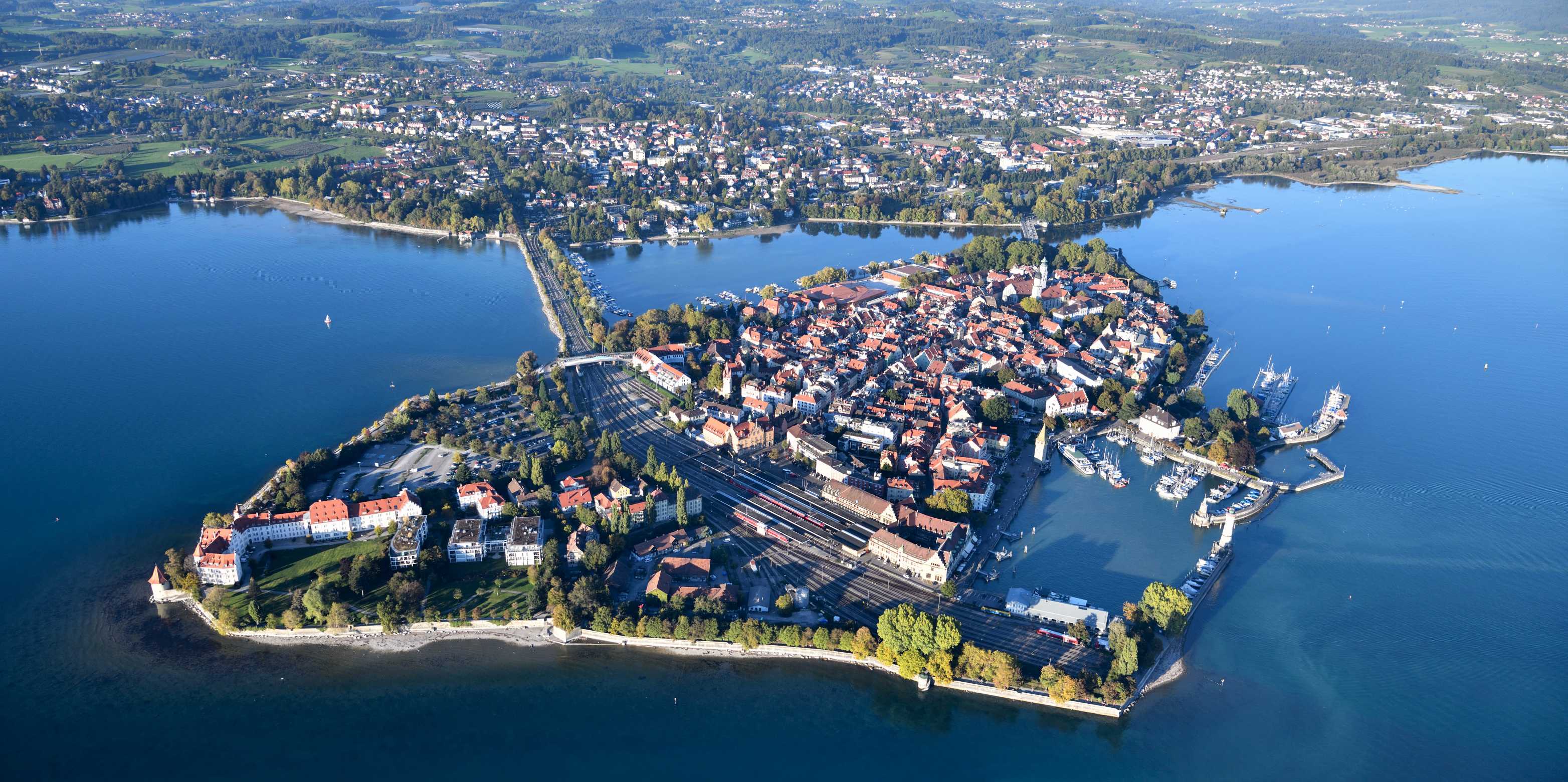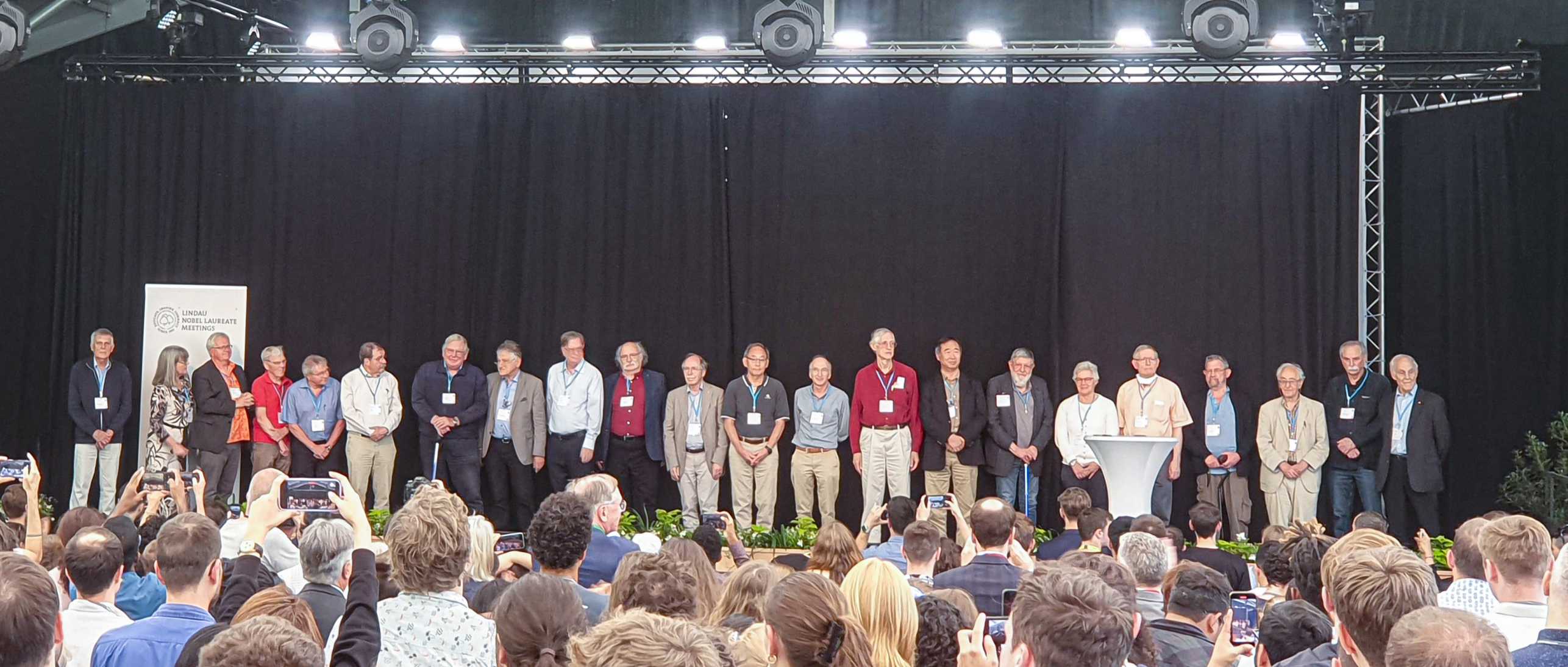A week with Nobel laureates
The Lindau Nobel Laureate Meetings in Physics stand as an enriching experience for established and early-career scientists alike.


As a participant in the 73rd Lindau Nobel Laureate Meeting in Physics that took place between 30 June and 5 July 2024, the motto "Educate - Inspire - Connect" resonated deeply with me during a week of fascinating presentations and inspiring interactions among about 35 Nobel Laureates and 650 Young Scientists from 90 countries.
Set on the beautiful Lindau Island, this yearly event has been held since 1951 to connect Nobel laureates with the next generation of scientists with the goal of having inspiration flow in both directions. This year's meeting focussed on three core topics: solutions for the future of the energy supply, the potential and impact of artificial intelligence, and a broader discussion of basic and applied research in quantum physics.
The programme was dense with activities stretching from early morning up to late evening. Nobel Laureates gave presentations about their research and took part in various events with Young Scientists. A unique format was that of Open Exchanges, a kind of "Ask me anything sessions" where laureates shared openly the professional challenges they faced as well as their career advice. We were especially inspired by stories from when they were young researchers themselves, some of which highlighted how important it is to keep going in spite of difficulties. For example, Professor Konstantin Novoselov changed PhD topic and advisor; Professor Brian Schmidt struggled with finding a job and almost quit research in astronomy only days before his Nobel-Prize-winning discovery was confirmed. The event organisers were also great in shining the spotlight on some Young Scientists, who presented their research in several topical sessions.
One of my personal highlights was a lunch event with Professor Theodor W. Hänsch, who with Dr John L. Hall was awarded the 2005 Physics Nobel Prize for research in laser-based precision spectroscopy, including the optical frequency comb technique. This area is closely related to my research at ETH Zurich, and Hänsch is one of my scientific role models. We soaked in every piece of advice he shared with us: he told us to pursue our passions and interests instead of chasing hot topics and advised us to have some safer projects on the side to not bet everything on a single high-risk experiment.
Another special event was the dinner with Professor Anton Zeilinger, who together with Professor Alain Aspect and Dr John Clauser was awarded the 2022 Physics Nobel Prize for pioneering experiments in quantum information science. It was a pleasure to discuss my research and career plans with Zeilinger and listen to his anecdotes from his days as a young researcher trying to make it into the world of science.
Several Nobel Laureates affiliated with ETH Zurich attended this year's meeting: Professor Didier Queloz (Physics 2019), Professor Kurt Wüthrich (Chemistry 2002) and Dr J. Georg Bednorz (Physics 1987). I was one of the Young Scientists representing ETH Zurich. Indeed, a crucial aspect of this event is the chance to meet fellow early-stage researchers from all over the world who work on a variety of topics, fostering connections and starting friendships that may last a lifetime.
On the final day of the meeting, we witnessed a historic event as 30 Nobel laureates signed the Mainau Declaration 2024 against the use of nuclear weapons, urging action to prevent catastrophic nuclear events. I felt this was an important moment: I believe scientists should also think about humanity's bigger problems to serve society as a whole.

About the author
Urban Senica is a postdoctoral researcher in the Quantum Optoelectronics Group of the Institute for Quantum Electronics, where he conducts research on quantum cascade lasers, frequency combs and broadband integrated terahertz photonics. He also dabbles in science communication.